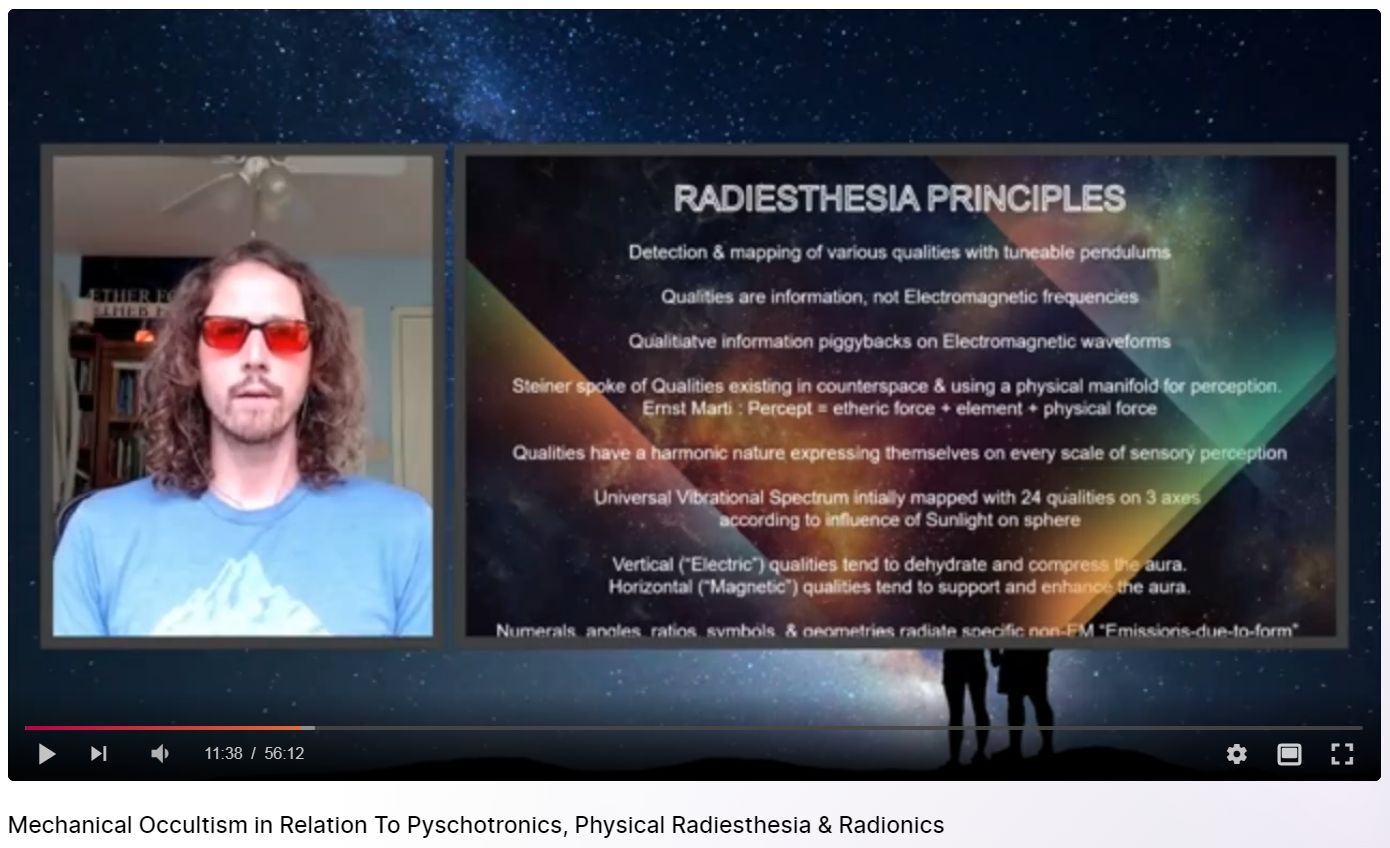Radiesthesia, Radionics, Psychotronics
calm, smooth, broad, deep, clear — EXCELLENT overview of spectrum
https://odysee.com/@AetherForce:3/aetherforce:7
Radiesthesia, radionics, and psychotronics are all terms related to the study and manipulation of subtle energies or forces for various purposes, including healing, diagnosis, and influencing consciousness. Here’s a brief overview of each:
1. Radiesthesia:
– Definition: Radiesthesia is the practice of using specialized instruments or the human body’s sensitivity to detect and measure subtle energies or radiation fields. Practitioners often use tools such as dowsing rods, pendulums, or specialized devices to identify energetic imbalances or anomalies.
– Applications: Radiesthesia has been used in various fields, including geology (for locating water or minerals), agriculture (for assessing soil quality), and alternative medicine (for diagnosing health conditions or detecting energy blockages in the body).
– Controversy: While some practitioners believe in the effectiveness of radiesthesia as a diagnostic tool, its scientific basis is controversial, and skeptics often attribute any perceived results to the ideomotor effect or other psychological factors.
2. Radionics:
– Definition: Radionics is a form of alternative medicine that involves using specialized devices called “radionic machines” to diagnose and treat health conditions by analyzing and influencing the body’s subtle energy fields. These machines typically have dials, switches, and other components that practitioners use to tune into specific frequencies or “rates” associated with different aspects of health.
– Applications: Radionics practitioners claim to be able to detect and rebalance subtle energy imbalances within the body to promote healing and well-being. Some radionic devices are also used for agricultural purposes, with practitioners claiming to enhance crop growth or repel pests.
– Criticism: Radionics is highly controversial within the scientific and medical communities, as there is little empirical evidence to support its efficacy. Skeptics argue that any perceived benefits are likely due to the placebo effect or other psychological factors.
3. Psychotronics:
– Definition: Psychotronics is a term used to describe the study of the interaction between consciousness and electromagnetic fields or other subtle energies. It encompasses a wide range of phenomena, including mind-machine interfaces, biofeedback, and the use of electromagnetic fields for influencing human behavior or perception.
– Applications: Psychotronics research has explored various applications, including brain-computer interfaces, biofeedback devices for stress reduction, and attempts to use electromagnetic fields for purposes such as mood enhancement or cognitive enhancement.
– Controversy: Like radionics, psychotronics is highly controversial and is often viewed with skepticism by mainstream scientists. While some research has shown promising results in certain areas, such as neurofeedback for treating certain neurological conditions, many claims made within the field remain speculative and unproven.
Overall, radiesthesia, radionics, and psychotronics represent areas of inquiry that exist at the fringes of mainstream science and medicine. While some individuals and practitioners believe in their effectiveness, they remain subjects of skepticism and scrutiny within the scientific community.
